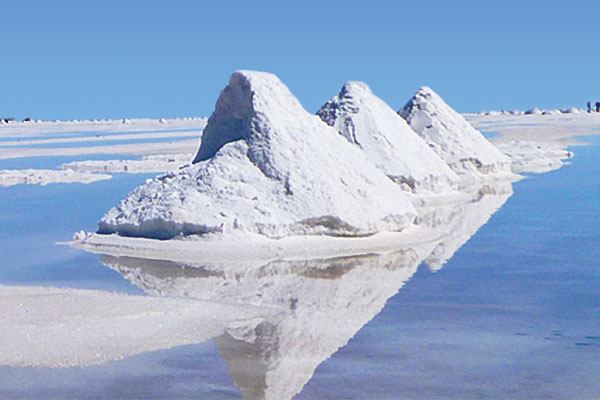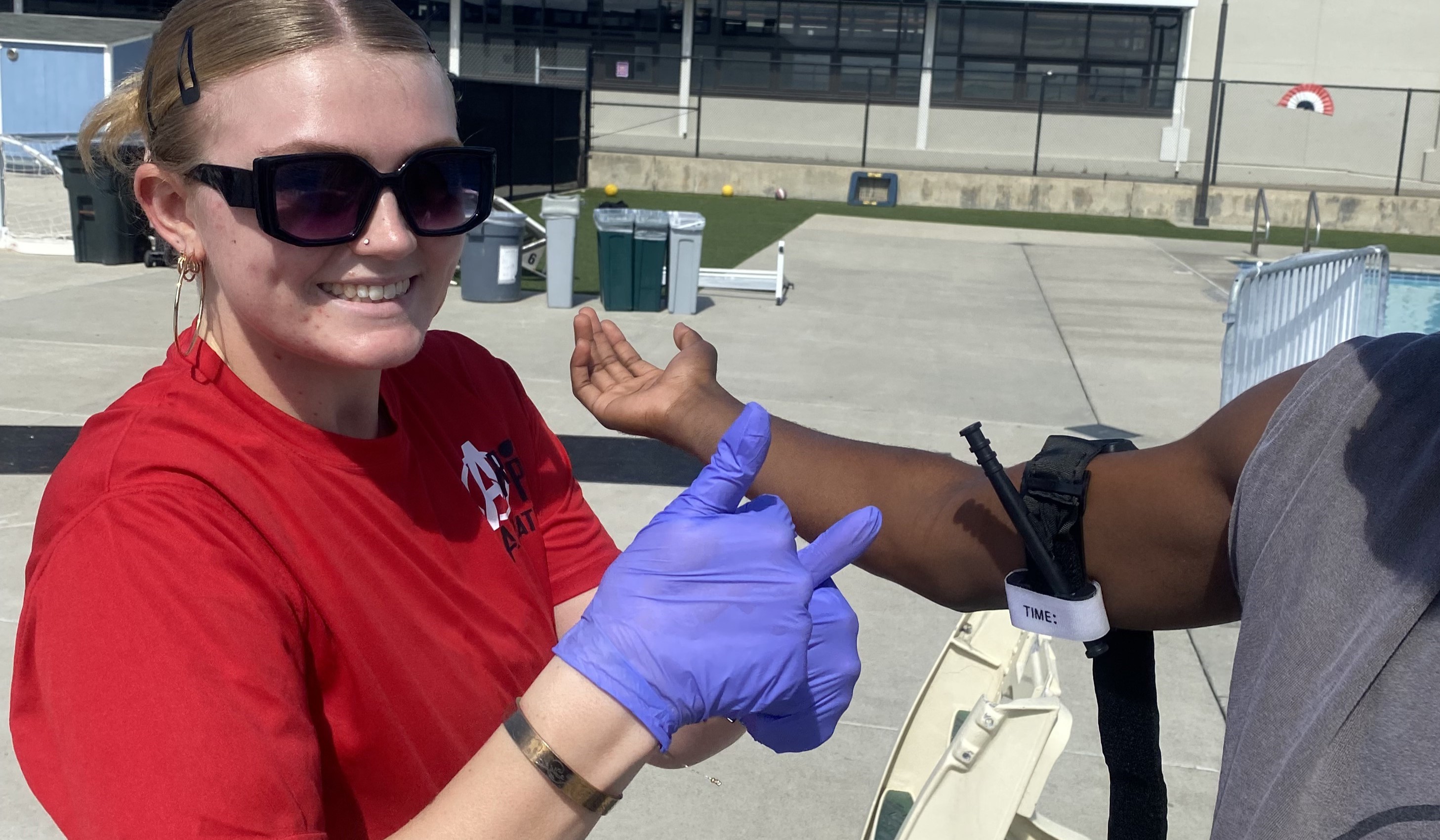What kind of salt should I use?
The most important thing about salt used for pools with chlorine generators is that it be “food grade,” or nearly pure. Don’t use rock salt, salt with additives, such as more than 1 percent yellow prussiate of soda, more than 1 percent anti-caking agents or iodized salt in a pool.
The first choice is obviously pool salt. This salt tends to dissolve most easily when it’s poured into the pool. Water softener salt can also be used, as can salt pellets, but these might take a bit longer to dissolve. Be sure the salt is brushed around the pool since it can cause discolorationif it sits for too long in one place.
Also, add less salt first and test the water. It’s easy to add salt, but if too much is put in, the only way to remove it is to partly drain the pool.— S.S.
Pools with chlorine generators have been around since the 1980s, but have become increasingly popular in the past decade. Despite their prevalence, some service technicians treat them the same way they do any other pool, and that can present problems.
Chlorine generators work by taking salt that has been added to pool water on fill-up, running it between electrically charged plates in a cell, and producing chlorine gas. The gas goes into the water as it returns to the pool, providing a nearly constant source of sanitizer.
The first thing a service tech should look at on a pool with a chlorine generator is the water level. “You have to make sure the water levels are correct,” says Mari Lange, owner of Algae Eaters Pool Service in Bradenton, Fla. “If they’re not correct, and you keep losing prime, the cell’s not going to be making any chlorine. You have to make sure that water is flowing continuously through the salt generator.”
Anything that can slow the flow of water, such as a bad filter element, should be addressed, Lange says. “If you don’t have flow through your generator, you don’t have chlorine.”
One byproduct of the production of chlorine from salt is sodium hydroxide, also known as lye or caustic soda. The addition of this substance to the pool water tends to push the pH higher. Instead of running at the ideal range of 7.4 to 7.6 pH, pools with chlorine generators will run as high as 7.8 or more.
“You compensate for that by bringing down alkalinity,” explains Steve Donohoe, a Certified Pool Operator instructor and owner of Another Perfect Pool in Mission Viejo, Calif. “You can bring it down to about 60 or 70 [total alkalinity]. That will help hold the pH down and keep it there during the week.”
Still, it can be difficult keeping it in the ideal range. “I’ve tried to fight that pH — keep it at 7.5 — and just couldn’t do it,” Donohoe says. “But I have many salt pools where the pH is high and they’re fine. Bathers think the water’s great. The reason the water feels better is because it’s cleaner.” Lange goes so far as to recommend pool owners have a pH feeder, which dispenses measured doses of muriatic acid into the pool, installed if a pool is having pH issues.
The most important thing a service tech can do is regularly monitor the pH and alkalinity of his pools with chlorine generators. “I like the idea of keeping a log,” says Doug Latta of On Balance, a consulting group focusing on pool chemistry issues. “Have a quality pH meter available as well. … If a tech has 60 or 70 percent chlorinators on his route, he might want to have more precise testing available.”
Every pool has its own characteristics. Rather than trying to recall exactly what’s been done to a given pool, techs should keep a log on changes to a pool’s chemistry. A log should contain information on each pool about what pH issues a pool has, what chemicals have been added and how much was added. By maintaining a log on each pool on his or her route, a tech can keep track of how a pool responds to different changes in its water chemistry. Logs can be kept on paper or on various smartphone apps that are available.
Another variable to check is the pool’s salt levels. “That takes time,” Lange says. “You have to wait for that little strip. It takes about 15 to 20 minutes to get a good reading. I check the salt levels about once a month. I take a little shot glass with me, drop in the strip, and when I’m done with the pool, it’s ready.”
Watch the water temperature. If it drops below about 55 degrees, the chlorinator will not work because electrical conductivity is reduced in cold water. You might have to add chlorine manually in cases like these.
Pools with chlorine generators shouldn’t need salt added too often. Of course, they need several bags when the pool is first opened. And that’s something else for techs to watch. The salt should be spread evenly into the pool and brushed around afterward. “Salt itself is corrosive,” Latta says. “One of the problems we’ve seen is when it’s broadcast into the pool and not mixed properly, you can have isolated deterioration of the immediate area where the salt sat.”
One time to be especially cautious is when the pool’s plaster is new. “Any time you’re working on a pool with a salt chlorinator and a new plaster installation, I would wait one month before the introduction of salt and initiating the unit,” Latta says. “When salt is added, I’d pre-dissolve it in a 5-gallon bucket and carefully pour it around the pool until you get the required dosage. Afterward, brush the pool carefully. Whenever the pool is tested, test for pH and total alkalinity.”
That advice is echoed by those who deal with claims against pool techs for stained plaster. “What I’ve been able to ascertain is that apparently salt water pools need more muriatic acid than non-salt water pools to keep the pH in balance during routine maintenance,” says Ray Arouesty, owner of Arrow Insurance Service in Simi Valley, Calif., which provides policies to pool service businesses. “So to keep the pools balanced, the guys are regularly adding acid to the pools to bring down the pH. The problem is that through the repeated application of acid, in addition to lowering the pH, you lower the total alkalinity. Low alkalinity results in aggressive water, which attacks the plaster.”
After the initial application of salt, it shouldn’t need to be topped off too often. Salt leaves the pool only via backwash, by being splashed out or by being carried out by swim suits. It can also be diluted by rainwater. The salt level should be between 2,500 and 4,000 parts per million, depending on the model of chlorine generator being used. A good rule of thumb is that between six and seven 40-pound bags of salt are needed to bring 10,000 gallons from zero to 3,000 ppm. When adding salt, start with less salt than you think you’ll need, test the water and add more if needed. The only way to remove salt is to drain some of the salted water and refill the pool.
One added chore is maintaining the chlorine generator. They should be cleaned periodically with a mild muriatic acid solution. “I pull the salt cells and clean them every three months,” Lange says.
Another thing to keep an eye on is the bather load. “If I see they’re not using the pool a lot, I drop the chlorine percentage,” Lange says.
In addition, the cells wear out gradually and must be replaced every three to four years. As the cells begin to wear out, the tech will have to turn up the production of the generator.
Splashing the salt out of the pool can also hurt the surrounding area. “I would make sure to wash off concrete decks,” Latta says. “High salt content and concrete are never a good mix.” Some recommend that homeowners use a sealant on surrounding concrete and rocks.
Salt can also hurt surrounding plants, so be careful when backwashing the filter — don’t let any salt water get into the landscaping.




